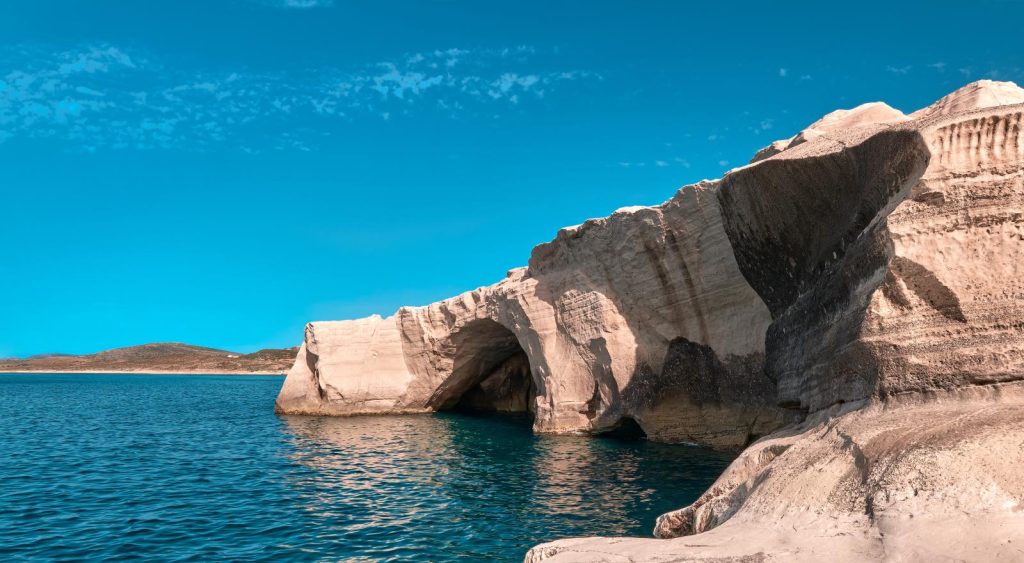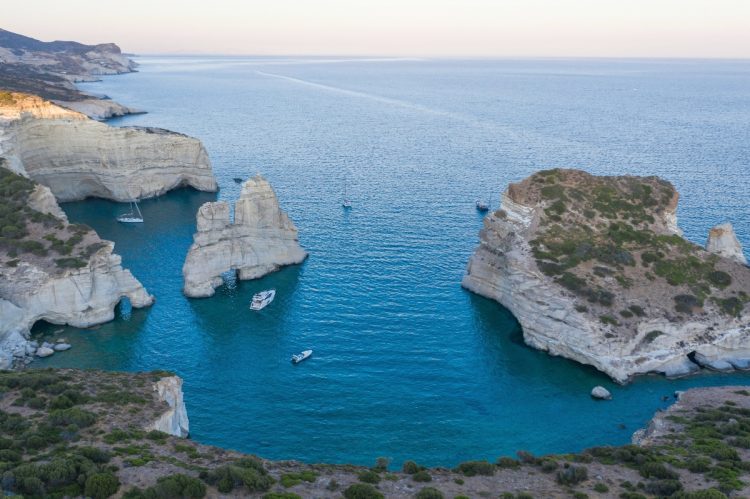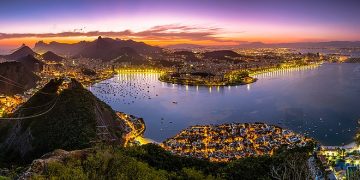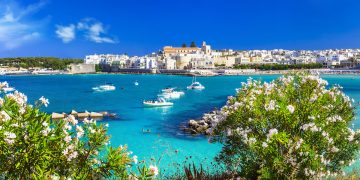The whitewashed walls of Santorini have long been synonymous with Greek island allure. Perched dramatically over volcanic cliffs, the island’s iconic domed churches and postcard-perfect sunsets have lured travelers for decades. But in 2024, a quiet shift is underway. A growing number of travelers are trading the crowded caldera views of Santorini for the raw, untouched beauty of Milos—an island further down the Cycladic chain that’s quickly becoming a darling among aesthetic seekers, slow travelers, and social media creators in search of space to breathe. The result? A new golden era for Milos, where white rock cliffs, azure coves, and unspoiled charm now stand as an alternative to overtourism fatigue.
Overcrowding in Santorini Triggers a Shift in Travel Tastes
Santorini, while still stunning, has in many ways become a victim of its own popularity. In peak seasons, cruise ships pour thousands of visitors into the narrow, winding streets of Oia and Fira, clogging every staircase, viewpoint, and boutique café with Instagram-hungry tourists. Hotel prices have soared beyond affordability for many, and once-charming villages now feel more like luxury shopping malls with sea views. This overcrowding has been widely documented across travel blogs and social platforms, where influencers increasingly warn followers of long queues for sunsets, jostling for photo spots, and the difficulty of finding tranquility among the throngs.
In response, travelers—especially millennials and Gen Z adventurers—are rethinking their priorities. Rather than competing for the perfect Santorini selfie, many are choosing experiences that feel more personal, more spontaneous, and less commercialized. Enter Milos, an island long overshadowed by its glamorous neighbor but now rising rapidly in both travel rankings and on-the-ground buzz.
Milos: The Untamed Gem of the Cyclades
Located southwest of Santorini, Milos boasts an entirely different rhythm. It doesn’t promise lavish cliffside resorts or Michelin-starred rooftop dining. What it offers instead is wild beauty, geological wonder, and a refreshingly laid-back lifestyle. Its unique topography—shaped by ancient volcanic activity—has created a coastline of alien-like white rock formations, hidden coves, and multicolored beaches. The island’s most famous spot, Sarakiniko Beach, looks like a moonscape dipped in turquoise, with smooth white boulders tumbling into electric blue water.
But it’s not just the landscapes that attract. Milos remains rooted in authenticity. Fishing villages like Klima and Mandrakia still feature brightly painted boathouses and calm harbors where wooden boats bob in the sun. The port town of Adamas offers simple tavernas serving fresh grilled octopus, local cheeses, and honey-drenched pastries. The overall atmosphere is unhurried, welcoming, and blissfully devoid of tourist traps.
Travelers arriving in Milos feel something that’s becoming rare in the Greek islands: the freedom to explore without elbowing through crowds. Renting a scooter or ATV opens up access to secluded beaches, ancient catacombs, abandoned mines, and untouched walking trails. There’s no urgency, no ticking list—just a slow unfolding of discovery that rewards presence over performance.
Reels and TikToks Catapult Milos into the Spotlight
In 2024, Milos has seen a dramatic surge in digital exposure, thanks in large part to creators focusing on natural aesthetics and offbeat destinations. Travel reels showcasing Sarakiniko’s surreal white cliffs at golden hour, crystal-clear swims at Kleftiko’s sea caves, or pastel-colored fishing huts glowing at sunset have gone viral across Instagram and TikTok. These short-form videos highlight not only the island’s beauty but its peacefulness—an increasingly rare quality in high-traffic European destinations.
Content creators are praising Milos for its photogenic, cinematic charm that doesn’t require heavy editing or battling crowds. The dramatic contrast of the white volcanic rock against deep blue Aegean waters creates a ready-made palette for minimalist travel content. Drone footage reveals untouched stretches of coastline where travelers float alone in shimmering bays, evoking both serenity and exclusivity without the price tag.
Social media’s growing preference for “hidden gems” and authentic moments over mass-market landmarks has played perfectly into Milos’ strengths. In this new digital era, virality favors places where creators can capture solitude and scenery in the same frame—and Milos delivers both effortlessly.
Travelers Craving Aesthetic Beauty Without the Masses
In 2024, travel trends are pivoting away from the “see it before it’s gone” rush toward iconic destinations and more toward experiences rooted in feeling—peace, wonder, discovery. Milos appeals directly to this evolution. Its charm lies not just in its visual appeal but in how it makes travelers feel: unhurried, enchanted, and connected to something elemental.
Aesthetics still matter, but increasingly, travelers want their beauty served with breathing room. The era of waiting in line for a sunset shot is giving way to the desire to stumble upon that perfect view in solitude. Milos allows for this. Whether it’s watching the stars appear over the cliffs of Firopotamos or sipping a cold Mythos beer on a quiet beach with no Wi-Fi, the island invites a gentler kind of magic.
Milos is also proving especially attractive to couples and solo travelers. Its romantic isolation, meandering coastline, and simple luxury make it an ideal escape for those seeking an alternative to more overbuilt destinations. The lack of giant resorts has preserved the integrity of the landscape, allowing visitors to immerse themselves fully in its raw, natural setting.

Easier Access and Evolving Infrastructure
Until recently, Milos’ relative inaccessibility helped keep it under the radar. Travelers needed to connect through Athens by ferry or take a small domestic flight. But in 2024, streamlined ferry schedules and faster catamarans have made the island significantly easier to reach. Travel agencies and boutique tour operators have taken note, offering Milos add-ons to popular Cycladic itineraries.
At the same time, the island’s infrastructure is quietly evolving to meet the rising interest without losing its essence. Small-scale eco-lodges, minimalist hotels, and sustainable guesthouses have opened to accommodate style-conscious travelers looking for comfort without sprawl. Family-run restaurants continue to dominate the food scene, maintaining the intimate, community-driven vibe.
The local tourism board has embraced this shift with care, promoting responsible travel while protecting cultural heritage and environmental integrity. The focus is on preserving the island’s unspoiled character while allowing travelers to experience it in meaningful, low-impact ways.
The Emotional Pull of Milos in the Post-Crowd Era
There’s a growing emotional dimension to travel in 2024. After years of pandemic-related lockdowns and the mental fatigue of overexposure in major hotspots, people are craving depth. They want to remember how it feels to stumble upon a beach with no one else in sight. To hear waves without the buzz of motorbikes. To sit under the stars with no agenda.
Milos taps directly into that longing. It feels like a rediscovery—a reminder of why people fell in love with the Greek islands in the first place. Unfiltered, unhurried, and unmarred by the pressure to perform or capture the perfect moment. Milos allows travelers to simply be, and that is becoming a rare and precious gift in modern tourism.
As such, it’s not just Santorini that travelers are escaping. It’s a mindset of oversaturation, overplanning, and oversharing. In its place, Milos offers a reset: where aesthetic beauty still reigns, but the experience belongs to you, not the crowd.
Will Milos Remain a Secret for Long?
The question many are beginning to ask is whether Milos can maintain its magic in the face of rising popularity. Like all “hidden gems,” its newfound fame comes with risks. But so far, the island has shown resilience. Its terrain naturally limits overdevelopment, and local stakeholders are proactive in protecting its delicate balance.
What makes Milos particularly promising is the type of traveler it attracts—curious, conscientious, and craving connection rather than conquest. These travelers are more likely to support local businesses, tread lightly, and advocate for the kind of mindful exploration that keeps Milos special.
For now, Milos remains one of the few places where you can dive into crystalline waters alone, hike sun-bleached trails without a caravan of tour groups, and dine under the stars while fishing boats bob in silence nearby. It may not be under-the-radar for long, but in 2024, it still offers the rare thrill of discovering paradise before everyone else gets there.





















